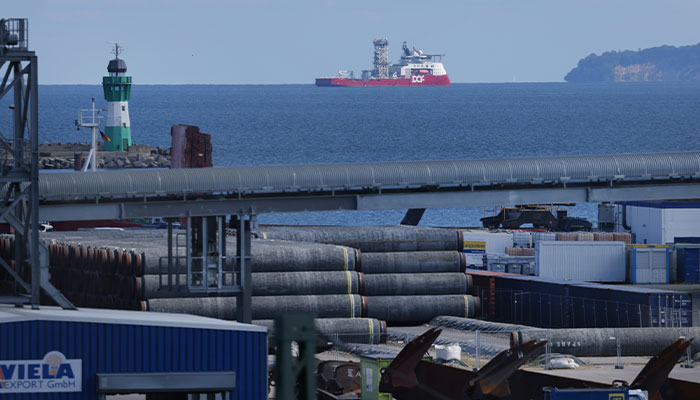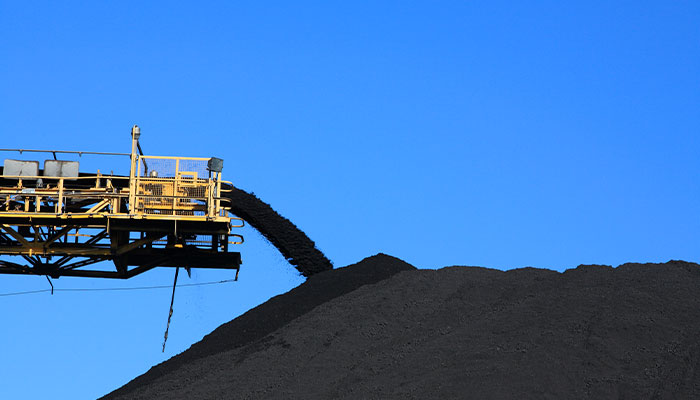The world has found itself in the midst of a global energy crisis just as economies are reopening and learning to live with COVID-19.

Energy low: A Shell employee holds up an unwelcome sign for queueing motorists in Blackheath, London, last month.
Amid soaring crude oil and LNG (liquified natural gas) prices, coal shortages and queues at the petrol pump in Britain, the world has not seen such a dislocation in energy markets since the oil shocks of the 1970s.
Oil is at a three-year high due to tight supplies, European and Asian gas prices are at an all-time high, and coal is soaring driven by energy shortages across China, India and Germany.
This demand is being driven mostly by recovering economies and anticipated extreme weather conditions in Europe and north-east Asia. China is giving priority to stockpiling domestic coal and gas reserves at all costs, and a further complication is stemming from Russia’s reluctance to supply gas into Western Europe.
Closer to home, eastern Australia is already dealing with a challenging gas-pricing model, and there is growing speculation that soaring natural gas and LNG prices may also hurt domestic energy retailers in the future.
Petrol pandemonium
In Britain, a lack of truck drivers has led to a range of problems for retailers, resulting in panic-buying as motorists feared a petrol shortage. After Brexit, many European drivers returned to their home countries and never returned.
Compounding Britain’s energy problem was the so-called “windless summer” where renewable power production was curbed. This predicament put a significant strain on electricity generation, as renewable energy generation dropped to 32.1% on the October 12.
Australians could be slapped with higher prices at the pump as 80 per cent of local petrol, diesel and jet fuel comes from Asia.
Britain has transitioned away from coal as an electricity source in recent years, and with low emergency supplies, it will find it difficult to suddenly switch to coal.
Prime Minister Boris Johnson remains committed to wind power and has pledged for the UK to become the “Saudi Arabia of wind power”, saying offshore wind farms will generate enough electricity to power every home in the UK within a decade.
Oil on a roll
When it comes to oil, Australians could be slapped with higher prices at the pump as 80 per cent of local petrol, diesel and jet fuel comes from Asia. This could add to existing headwinds for travel-deprived Australians looking to book airlines tickets as fuel prices are likely to remain high.

Competition: Stacked at a German port are pipe sections for construction of the Nord Stream 2 gas pipeline, which is among the projects that will put severe pressure on Australian contracts.
OPEC+ (OPEC and a Russia-led group of oil producers) agreed to raise oil production in measured steps, but decided against opening the spigots more widely, driving Brent oil prices to a three-year high above $US81 a barrel.
If Britain and Germany resolve their gas supply issues with Russia, prices could come down by mid-2022. Australia, a leading LNG exporter will need to compete with gas pipelines like the Nord Stream 2 and the upcoming Power of Siberia gas line. This will put severe pressure on Australia’s 20 to 30 lucrative long-term supply contracts with Japan, South Korea and Taiwan which are due to expire in a few years.
The current situation also provides additional export opportunities to countries in the Indo-Pacific that are investing heavily in their gas infrastructure and are eager to receive LNG imports.
Coal comfort
As the world tries to move away from coal in a bid to reduce carbon dioxide emissions, the crunch in the gas market is forcing countries to revert to coal for electricity generation and in industrial and manufacturing industries.

In demand: In Europe and Asia, the use of coal has increased, with the price for thermal coal hitting record highs in Europe.
The Australian coal industry took a big hit in November 2020 with China banning shipments, but demand from markets in India and Japan and South Korea has provided a windfall. There is some speculation China might do a U-turn on the coal ban from Australia.
With European LNG prices rising, coal usage has increased in north-west Europe. If countries like Germany and Poland decide to replenish their stockpile of coal in 2022, Australia could have further opportunities to sell coal into Europe.
In Asia, there isn’t enough coal to meet expected demand. A cold winter followed by a hot summer and stronger economic growth has led to greater Chinese demand. It is the main cause of an emerging electricity crisis in China.
China, which eased up on coal consumption a few months ago to meet emission targets, is back in the market as stockpiles run low. Chinese buyers are sourcing overseas supply to ensure heating and power generation needs are met. India faces a similar predicament as coal stockpiles are running low.
In Europe, the early closure of nuclear plants and record high LNG prices are forecast to result in an increase in coal use. The price for thermal coal is hitting record highs in Europe, and Australian Newcastle coal is up 250 per cent and close to its 2008 record high.
Future in flux
The current energy crisis shows that the transition to renewables will take longer than expected. It is complex and problematic and not as simple as swapping fossil fuels for green energy.
Is it a lesson that perhaps if the world transitions away from fossil fuels too quickly, it may run into problems, especially during periods of extreme weather conditions.
World leaders will have to rethink their energy mix over the next few years and also start considering significant investment in energy storage for solar and wind.

Dr Lurion De Mello (pictured) is a Senior Lecturer in the Department of Applied Finance at the Macquarie Business School








